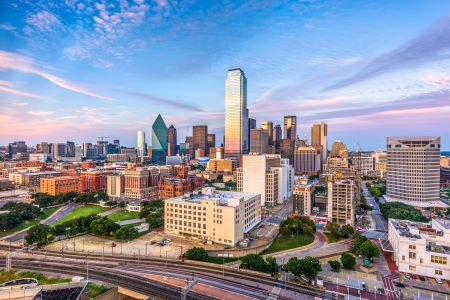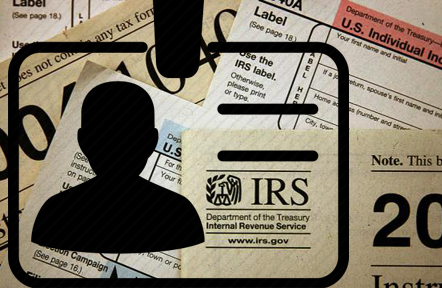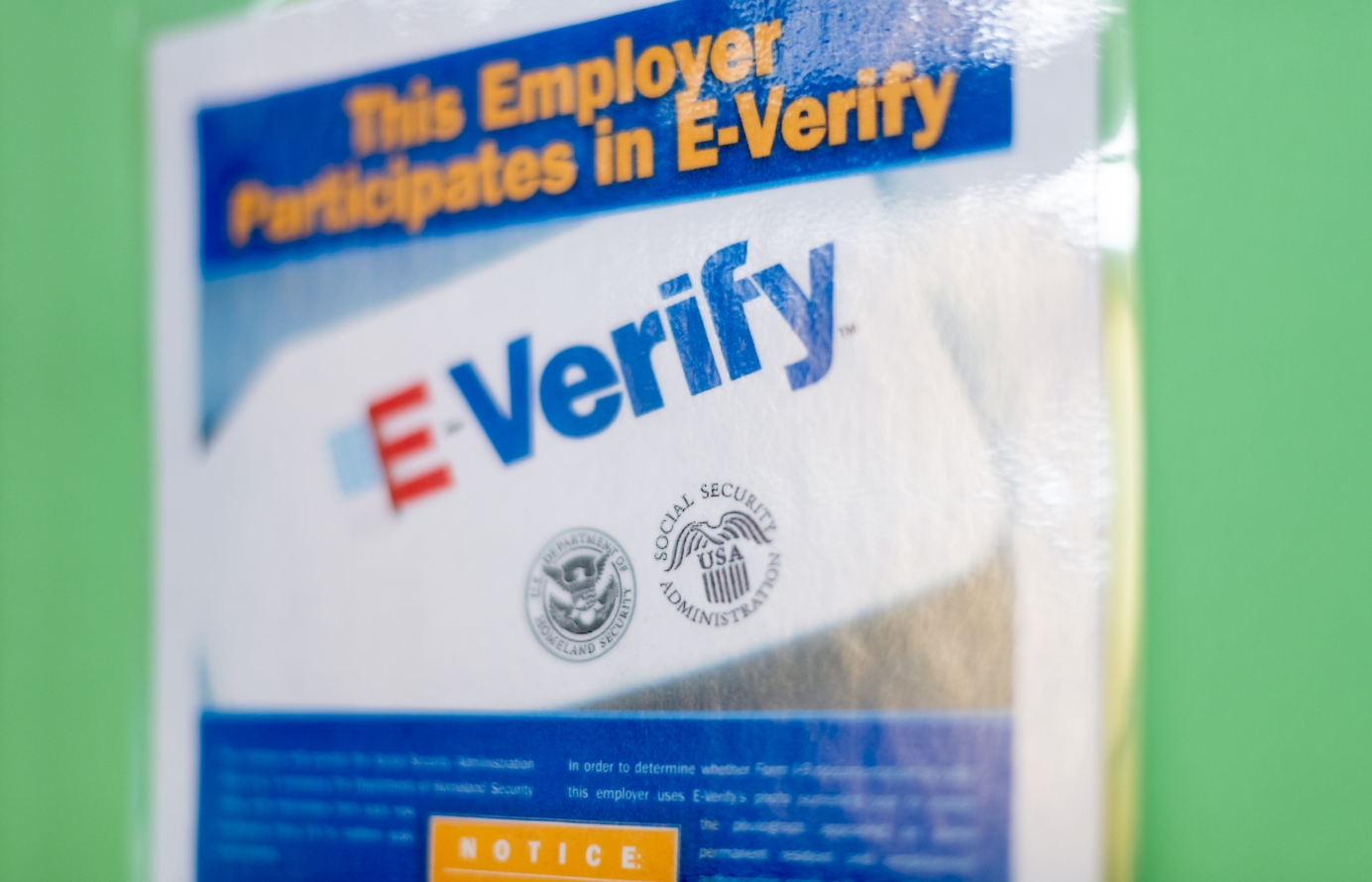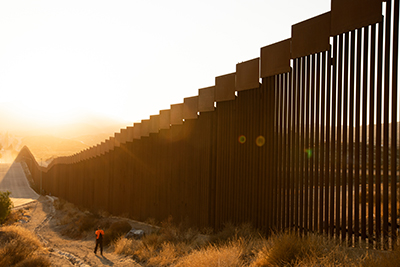U.S. Labor Demand Explains Most of the Rise in Illegal Immigration
The flow of illegal immigrants across the southern border has markedly risen over the last several years. In FY2021, Border Patrol had 1,662,167 encounters with illegal immigrants and other border crossers. So far in FY2022, which ends on September 30th, Border Patrol has had almost the same number of encounters. This year will set a new record. From a low number of encounters in April 2020 due in large part to the pandemic, encounters have increased steadily and began to rise even faster after President Biden took office.
Many commentators, pundits, and politicians are blaming President Biden’s immigration policies for the rapid increase in border crossers. It’s easy to see why: In January 2021, Border Patrol had 75,312 encounters with border crossers. By March, the number more than doubled to 168,195 and have hovered between about that over 224,000 per month. Changes in asylum policy and other immigration policies, even according to statements by some of the migrants, can explain part of the increase. Those factors play a role, but the biggest explanation for the increase in illegal immigration is the attraction of the number of near‐record number of job openings in the United States.
There were 10.2 million private job openings in May 2022, slightly off a high of 10.8 million in March. The number of private job openings in May 2022 is 69 percent higher than the monthly average during the Trump administration (Figure 1). The wage gain for immigrants is already a 4‑fold to 10‐fold increase compared to mostly Latin American countries, which includes the higher cost of living in the United States. That wage premium combined with the hottest labor market in the history of the private job openings dataset likely explain why so many illegal immigrants are trying to come now (usual econometric caveats about spatial autocorrelation and omitted variable bias aside).
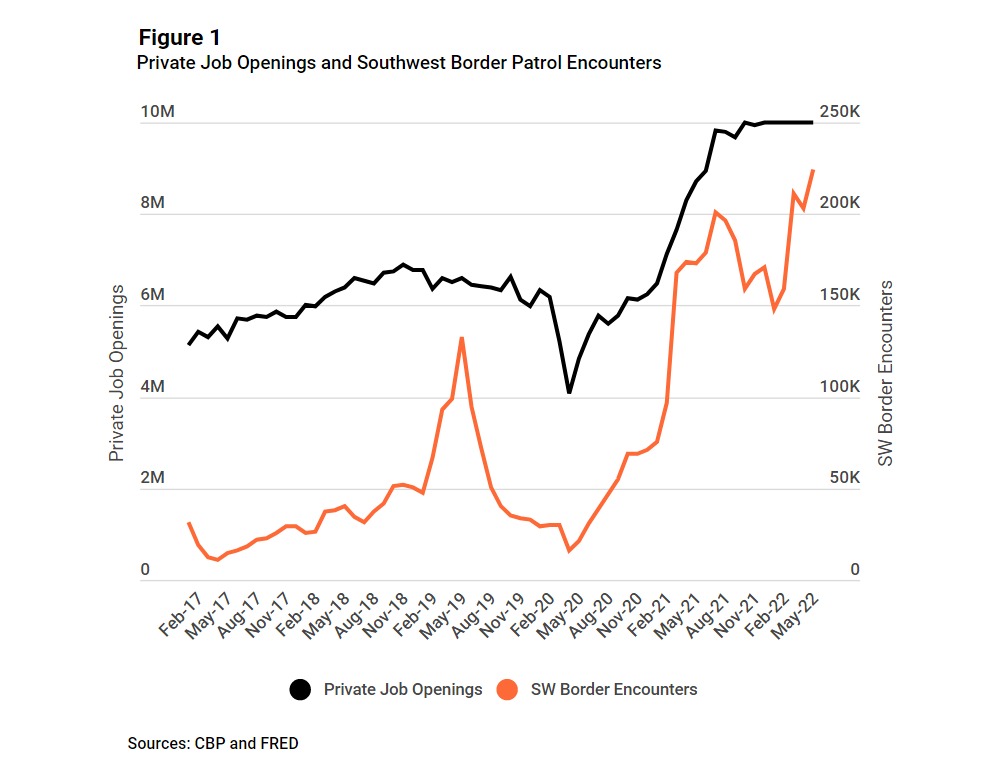
Due to inflation, real wages have not been rising even though nominal wages are up. This likely reduces U.S. labor supply and increases demand for workers, but these effects have a comparatively small effect on the supply of immigrant labor because their relative wage gains from immigrating here are already so large. To be sure, the supply of willing foreign workers would increase if U.S. wage growth were higher, but real wage declines don’t affect their decisions to immigrate nearly as much as they affect the choice of Americans to reenter the labor market.
The economic gains from working in the United States largely explain why immigrants want to come in the first place and the scarcity of visas explains why so many come illegally. There simply are not enough temporary work visas available in enough sectors of the U.S. economy for legal migrant workers to meet the demand of the U.S. labor market, so illegal migrant workers meet it.
Title 42, a policy enacted by the Trump administration to quickly remove unlawful border crossers during the pandemic, also increased the number of illegal immigrants by reducing the cost for each individual border crosser. Instead of migrants being detained for long periods of time before being returned to their home countries, Title 42 mandated that they be returned rapidly – often in the same day they were apprehended. Swift returned increased the recidivism rate to 27 percent for FY2021, up from 7 percent in FY2019. The FY2022 recidivism rate could be even higher. As a result, the cost of trying to cross illegally fell. Another consequence was the subsequent reemergence of Mexican illegal immigration. A lower cost of crossing illegally, growing U.S. labor demand, and few visas all incentivize much of the recent increase in illegal immigration.
Television shows, commentators, and most immigration experts are focusing on how changes in government policy have exacerbated illegal immigration. They’re right to focus some attention on those explanatory variables, but they shouldn’t ignore the biggest explanatory variable of all: the booming U.S. labor market. As a counterfactual, imagine if the border and immigration policies were the same and that there were just 5 million job openings. In such a scenario, which we may face in the next few years if not sooner, the number of illegal immigrants crossing the border would be much smaller. The state of the U.S. economy and labor market is the first explanation to consider when explaining the present surge of illegal immigration.



